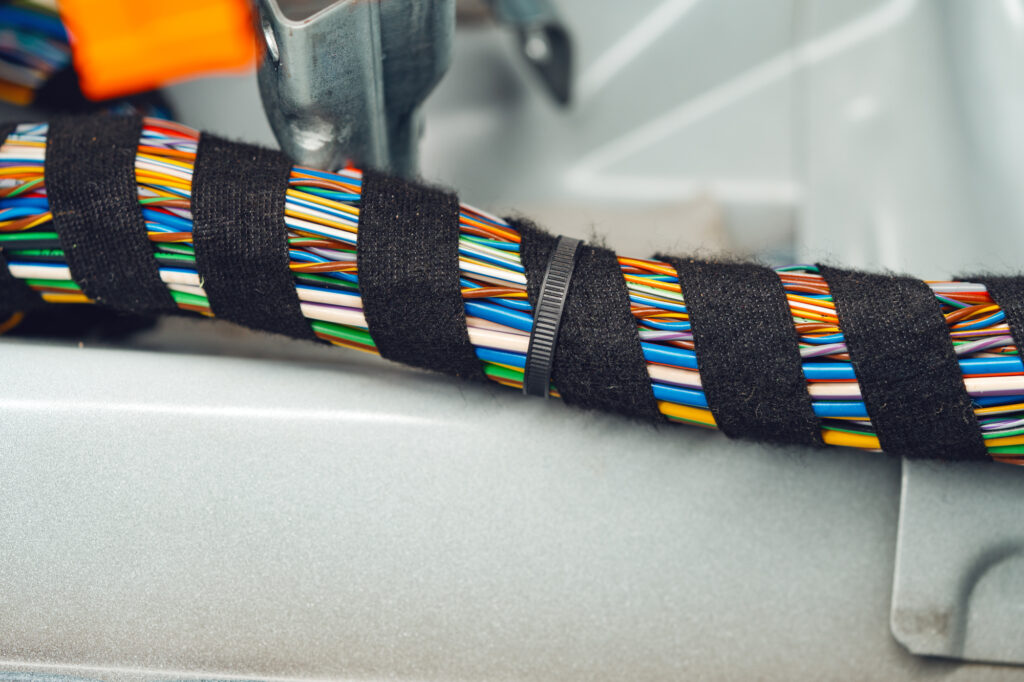Cable & Wire Harnesses
Electronic Wire and Cable Harnesses: Understanding Signal Protection and Types
Electronic wire and cable harnesses are critical components in modern electronics, providing essential connectivity and signal transmission within complex systems. Understanding the degrees of signal protection and the various types of wire and cable harnesses is essential for designing robust and reliable electronic systems. This article delves into the world of wire and cable harnesses, exploring their manufacturing process, the importance of signal protection, and the different types available.
- Manufacturing Process
Wire and cable harnesses are typically manufactured by carefully bundling multiple wires or cables together into a single unit. The process involves selecting the appropriate wires or cables, cutting them to the desired length, stripping the insulation from the ends, and then terminating and bundling them using various methods such as crimping, soldering, or connectorization. The final harness is often enclosed in protective sheathing or sleeves for added durability and safety. - Importance of Signal Protection
Signal protection is crucial in wire and cable harnesses to ensure optimal performance and reliability. Several factors can affect signal integrity, including electromagnetic interference (EMI), radio frequency interference (RFI), crosstalk, and environmental hazards. To mitigate these issues, various degrees of signal protection are implemented through shielding, grounding, insulation, and the use of specialized cables with enhanced noise immunity. - Degrees of Signal Protection
a) Unshielded Cables: Unshielded cables, also known as twisted-pair cables, consist of multiple pairs of insulated wires twisted together. The twisting helps reduce electromagnetic interference and crosstalk between adjacent wires. Unshielded cables are commonly used for low-frequency signals and data communication applications.
b) Shielded Cables: Shielded cables include an additional layer of shielding, typically made of a conductive material like metal foil or braided wire mesh. The shielding acts as a barrier, preventing external electromagnetic interference from affecting the transmitted signals and reducing the emissions from the cable itself. Shielded cables are suitable for high-frequency applications and environments with higher levels of EMI/RFI.
c) Coaxial Cables: Coaxial cables feature a central conductor surrounded by an insulating layer, a conductive shield, and an outer insulating jacket. This structure provides excellent protection against EMI/RFI and ensures controlled impedance, making them ideal for high-frequency applications such as video transmission, networking, and telecommunications.
d) Fiber Optic Cables: Fiber optic cables use thin strands of glass or plastic to transmit signals as pulses of light. These cables are immune to electromagnetic interference and offer high-speed, long-distance transmission with low signal loss. Fiber optic cables find widespread use in high-bandwidth applications, including telecommunications, data centers, and audio/video systems.
- Additional Considerations
Beyond the degrees of signal protection, other factors influence the selection of wire and cable harnesses. These include the required voltage and current carrying capacity, temperature and environmental conditions, flexibility, mechanical strength, and the presence of any specific certifications or industry standards.
Wire and cable harnesses are vital components in modern electronics, enabling efficient signal transmission and system connectivity. Understanding the various degrees of signal protection, such as unshielded cables, shielded cables, coaxial cables, and fiber optic cables, is crucial for designing reliable electronic systems. By considering factors like EMI/RFI, crosstalk, and environmental hazards, engineers can select the appropriate wire and cable harnesses to ensure optimal signal integrity and performance. With the continuous advancements in technology, wire and cable harnesses continue to evolve, meeting the ever-increasing demands of modern electronic systems.

